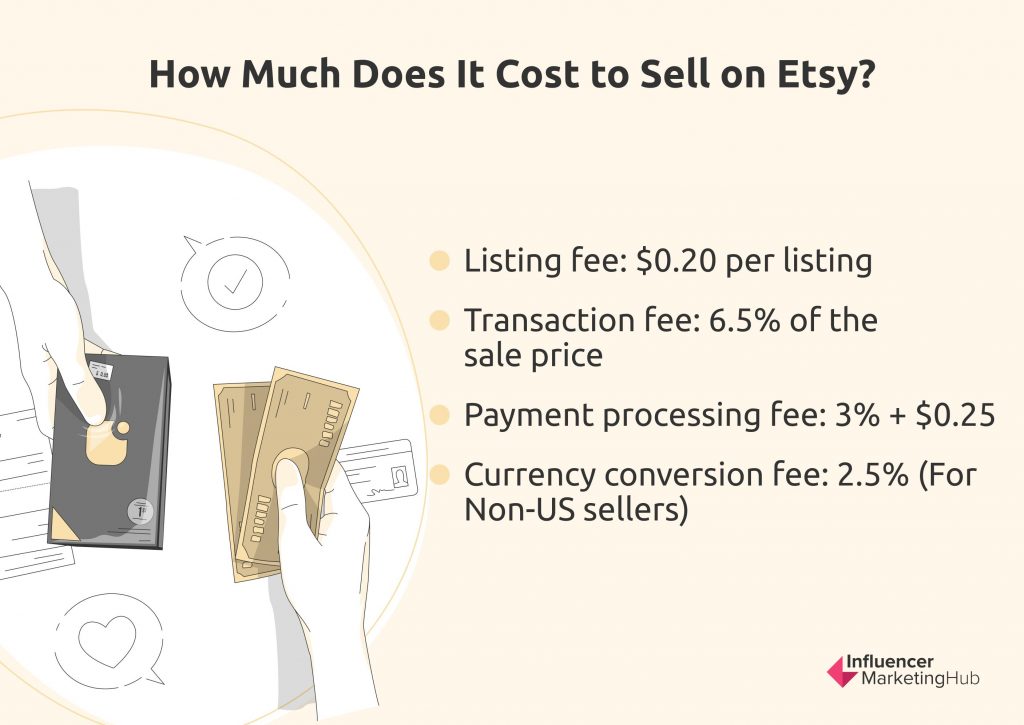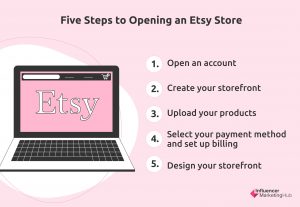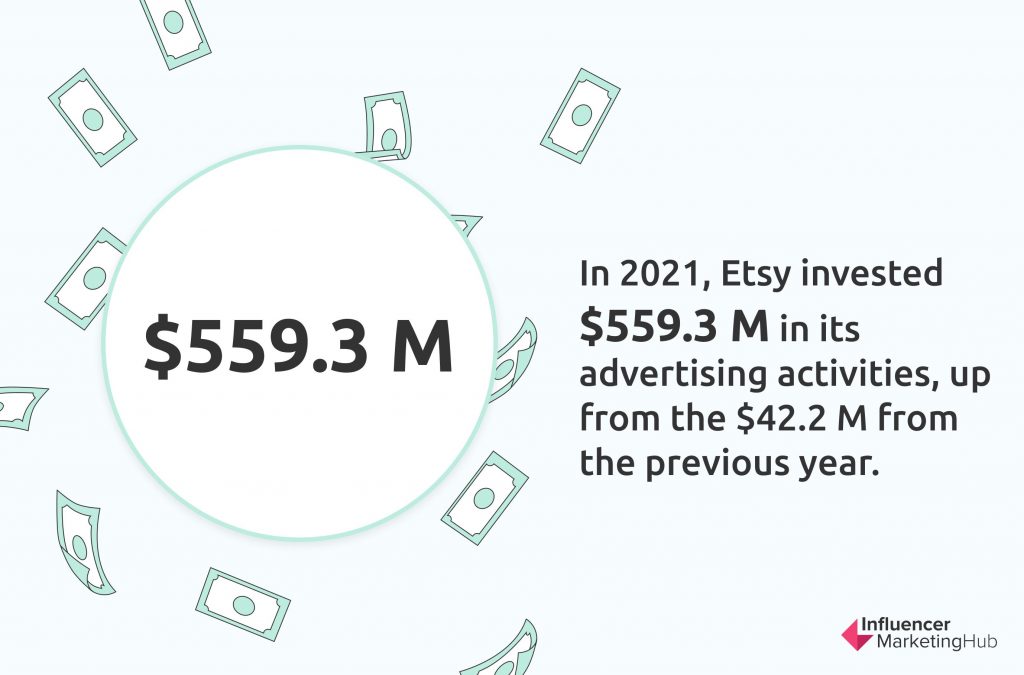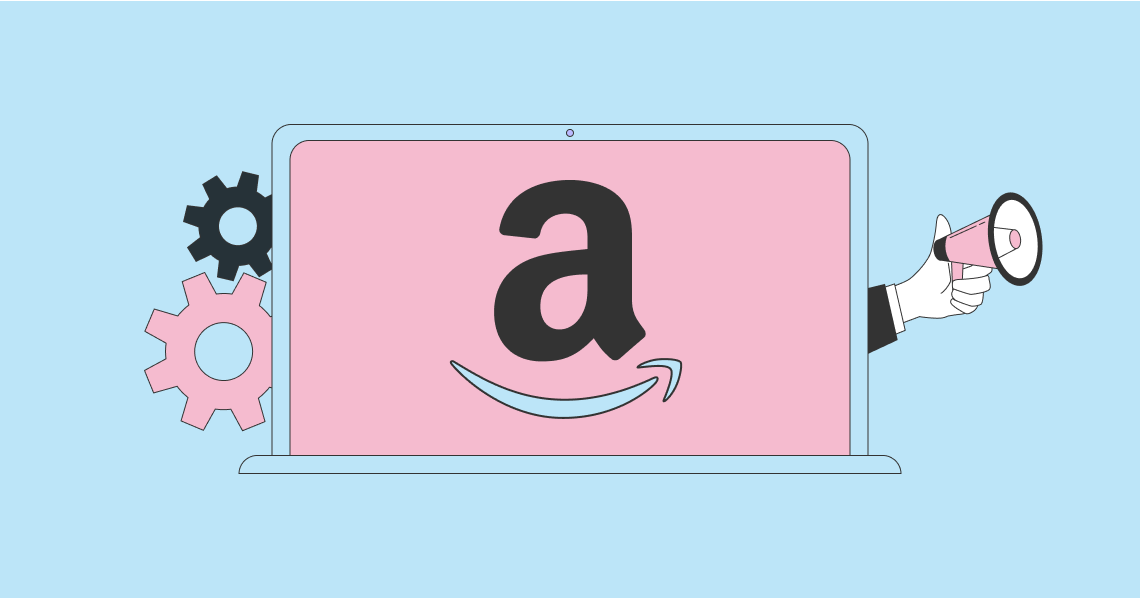The last two years in particular have been very successful for Etsy. While the number of active buyers on the platform has grown gradually each year for the past 10 years, it suddenly spiked in 2020. Then, in 2021, it had another year of better-than-average growth and welcomed nearly 15 million new buyers. What’s more, from 2020 to 2021, it managed to increase its annual gross merchandise sales by more than 30%.
So, if you’re selling vintage items or handcrafted products in particular, it can be a good idea to start selling on Etsy in 2022. That being said, just like the number of active buyers increased, so too has the number of active sellers. To help ensure that you’re set up for success from the start, we’ve created this quick step-by-step guide to help you create your store. From fees to advertising opportunities, here are all the basics you need to know to get started.
How to Sell on Etsy in Five Easy Steps:
How Much Does It Cost to Sell on Etsy?
First things first, the cost. While you can create an Etsy store free of charge, there are a number of costs that you’ll need to pay. As a matter of fact, these fees can add up to a significant sum. So, before we look at what you need to do to start selling, it’s perhaps a better idea to explain the cost involved first. This way, there are no unpleasant surprises after you’ve taken all day to set up your store.
Here are the main fees that you’ll be charged:

Listing fee
For every new listing that you add to your store, you’ll be charged $0.20. Each listing will appear on their marketplace for a period of four months (or till the product has been sold). If you opted for auto renewal, you’ll automatically get charged an amount of $0.20 again for the next four months. One thing to keep in mind is that you’ll be charged this listing fee even if you don’t get any sales.
Transaction fee
Once you’ve made a sale, you’ll also be charged a transaction fee. At the time of writing this article, it was set at 6.5% on the sale price (which includes the shipping fee that you’ve added).
Payment processing fee
The payment processing fee works out to 3% and then you’ll also need to pay $0.25 per transaction.
Currency conversion fee
All the transactions via Etsy are completed in US dollars. Sellers have the option to sell their products in another currency, but if you go this route you’ll also need to pay a currency conversion fee of 2.5%.
Five Steps to Opening an Etsy Store
If you’re fine to pay those fees and, according to your calculations, you’ll still be able to make a profit, here are the steps you need to complete to start selling on Etsy:

1. Open an account
To sell on Etsy, you’ll need to have an account. The good news is that it’s free and easy to create. All you need to do is open Etsy’s website in your browser and click on the “Open your Etsy shop” prompt. You’ll then be requested to add some basic personal details such as your email address and first name.
2. Create your storefront
After you’ve opened your Etsy account, you’re ready to open your Etsy shop. To start, select your shop preferences and other details like the language, currency, and country.
During this step, you’ll also need to add the name of your Etsy store. While typing in your name will take you a few seconds, choosing the actual name is a lot more time-consuming. Your Etsy store name will play a huge factor in how successful your online venture turns out to be. The best Etsy store names are:
- Short
- Unique
- Easy to remember, pronounce and spell
- Descriptive
All while you stick to the marketplace’s requirements. Store names may not be longer than 20 characters and it may not include any punctuation marks or spaces.
3. Upload your products
You’ll need to create a new listing for each product that you want to sell via Etsy. If you’re only starting out, try to see if you can upload about 10 listings.
While an SEO-optimized product title and product descriptions are important, your product photos will carry a lot of weight. With Etsy, you can add as many as 10 high-quality photos. Alternatively, you can add one video. While adding a video can sound attractive, bear in mind that it must be 15 seconds max and you won’t be able to add any sound.
Other important details that you will need to add include:
- A product category (you simply type in a few descriptive words and category suggestions will pop up)
- Pricing
- How many products are available
- Variations (like color or size), if applicable
- SKU (optional and for “office use” only)
Once you’ve added all the key product details, you’ll also need to add the shipping info. For example, where will the product be shipped from? What’s the average shipping time? Will you offer shipping upgrades?
Just like with other types of online businesses, it’s recommended that you offer free shipping. So, see if you can somehow let the numbers balance so that you can deliver free of charge while still remaining profitable.
4. Select your payment method and set up billing
This step is pretty straightforward, but, needless to say, you’ll want to double-check it carefully. In addition to adding the standard information like your bank name, name of the account holder, sort code, and account number, you’ll also have to indicate whether you’re an incorporated business or an individual seller.
As an added security measure, Etsy will make a very small deposit into the bank account that you’ve added. It’s just a test to verify your details. Once the payment reflects (it can take anything from three to five business days), you’ll be prompted to enter the amount in your Etsy Payment Account.
While on the topic of money, you’ll also need to select the payment method that you want to use to pay for your listing, transaction, and payment processing fees. To set up a listing, you’ll need to pay only $0.20. Then, when you sell one of your items, you’ll also need to pay a transaction fee of 6.5% and a payment processing fee of 3% + $0.25.
5. Design your storefront
When you’re selling on Etsy, you need to remember that your products can only do so much. You’ll also need to create a brand. To help you create a memorable brand, Etsy lets you customize your storefront.
Start by adding a profile and banner photo. If you already have a business logo, you can, for example, add that. Otherwise, you can upload a product photo that will grab attention and summarize what your store is all about.
Just like your products need an introduction, you’ll also need to add a short description of yourself and your store. When writing your user profile, the trick is to keep it authentic. You want to humanize your brand to potential customers. This helps to establish your online brand as trustworthy and credible. You can, for example, create a backstory. How did everything start? What made you decide on your product range? This is a good opportunity to highlight what sets your products apart from your competitors. Perhaps it’s handmade or vegan-friendly?
Then, there’s also the less interesting stuff like your different shopping policies. When you’re selling on Etsy, you’ll also need to add a shipping policy, returns policy, and privacy policy.
How Does Advertising Work?
Even the most interesting storefront isn’t going to convince your target audience to support you. In addition to search engine optimization (SEO) and other forms of marketing, you can also take advantage of these tools offered by Etsy.
Offsite Ads
One way that you can use to advertise your store and its products is to take advantage of Etsy Offsite Ads. With Offsite Ads, Etsy buys offsite advertising from participating providers, like search engines and social platforms, in their network. Etsy will then pay all the upfront advertising costs.
You’ll only be billed if you generate a sale via one of these offsite ads. So, if a customer clicks on an ad that includes your listing and buys something from your shop within 30 days after clicking on that ad, you’ll need to pay a standard fee of 15% if your store made less than $10,000 in sales during the past year. If your store has made more than $10,000 during the last year, this fee will be slightly lower (12%).

Etsy Ads
Etsy sellers can also choose to buy paid advertising on the marketplace itself through its Advertising Dashboard. With this type of ad, the shop or listings will get displayed prominently on the website and mobile app of Etsy. Sellers have a fair degree of control and can choose which listings to advertise and cap their budget. With regards to the advertising fee, unlike Offsite Ads that use a set percentage, Etsy Ads use a cost-per-click (CPC) structure based on its bidding system.
Coupons and sales
While it’s a good idea to use paid ad campaigns, another effective strategy that you can include in your marketing plan is to run some promotions from time to time. The marketplace currently offers its sellers two tools, sales and coupons, to help with their promotional efforts.
With a sale, sellers can offer a certain percentage off the sale price. Alternatively, they can also choose to offer free delivery for a set time.
Unlike sales that are displayed to the public, sellers also have the option to use a coupon instead that will only be shared with select customers. When opting for this promotional tool, the buyer will get a code that can be used for free delivery or a discount. While sellers will need to stick to the marketplace’s policies in connection with coupons, they do get the opportunity to communicate any limitations or terms when sharing the code at their discretion.
Wrapping Things Up
Etsy is one of the most popular online marketplaces for unique items and vintage or handmade products like jewelry. Thanks to its huge pool of active buyers, you can reach millions of people all across the world, without investing a lot in advertising. On top of that, it’s really easy to create your storefront and start selling.
That said, it doesn’t come without a cost. Even the basic selling fees can add up. Then, if you want to leverage Etsy’s advertising tools, like Etsy Offsite Ads, you can pay as much as 15% per sale. So, before you start selling on Etsy, first do the math. Other than that, it’s a great way to start a successful shop.
Frequently Asked Questions
How much does it cost to sell on Etsy?
While it’s free to create a store on Etsy, there are a number of fees you’ll need to pay. These include a listing fee, transaction fee, and payment processing fee. These fees range from 3% to 6.5% of the sale total. Then, if you want to make use of Etsy’s advertising services, these will also come at an extra cost.
Must you use US dollars when selling on Etsy?
All the transactions on Etsy are completed in US dollars, but sellers have the option to sell their products in a different currency. However, when selling in another currency than US dollars, Etsy sellers need to keep in mind that they will be charged a currency conversion fee of 2.5% in addition to the payment processing fee.
Which types of products sell fast on Etsy?
Products that sell fast on Etsy include jewelry, vintage items, art, collectibles, handmade items, and products in the home category. Also, it is more popular among buyers from the United Kingdom, Canada, Germany, France, and Italy. So, if you’re selling vintage or handmade items, art, or jewelry in particular, and your target audience is based in one of these countries, it’s definitely a good platform to explore.
How can you market your Etsy store and its products?
There are a few ways that you can advertise your Etsy store and its product range. For example, for an additional cost, you can take advantage of Etsy Ads and Etsy Offsite Ads. It’s also a good idea to use sales and coupons, two promotional tools offered by the marketplace. In addition to these marketing tools offered by Etsy, while a little bit more challenging, you can also use email marketing, SEO, and influencer marketing.
How do you pick a good Etsy shop name?
The best Etsy shop names are short (you may in any case not use more than 20 characters) and easy to pronounce, spell, and remember. Depending on the types of products that you’re selling and your target market, it can also be effective if you make it location specific by adding a country, city, or area.


